Covid-19 in the UK: How many coronavirus cases are there in my area?on June 25, 2021 at 4:22 pm
Explore the data on coronavirus in the UK and find out how many cases there are in your area.

image copyrightGetty Images
There have been nearly 4.7 million confirmed cases of coronavirus in the UK and more than 128,000 people have died, government figures show.
However, these figures include only people who have died within 28 days of testing positive for coronavirus.
Over 43 million people in the UK have now had their first dose of a coronavirus vaccine.
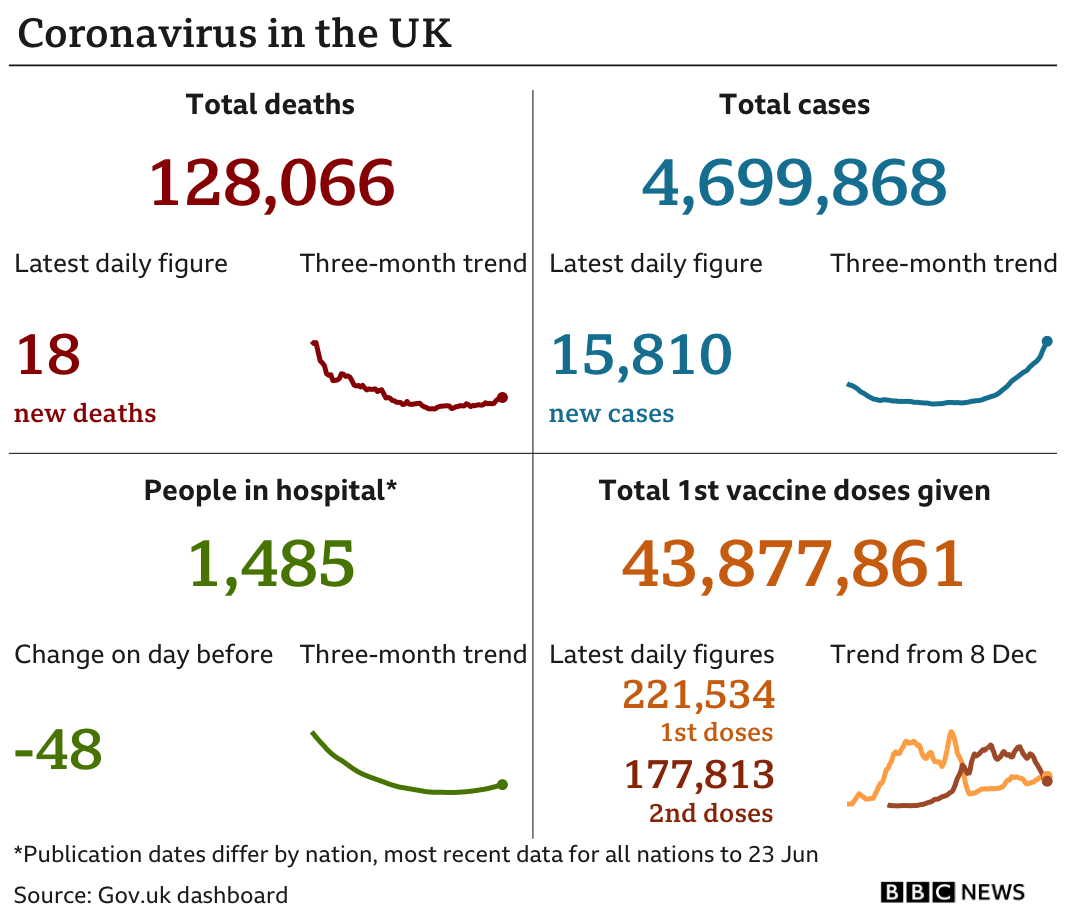


Find out how the pandemic has affected your area and how it compares with the national average:

After a substantial decline since the start of the year, the average number of daily confirmed cases is now rising.
A further 15,810 confirmed cases in the UK were announced by the government on Friday.
The daily average for cases began to exceed 10,000 again on Tuesday – the first time since 22 February.
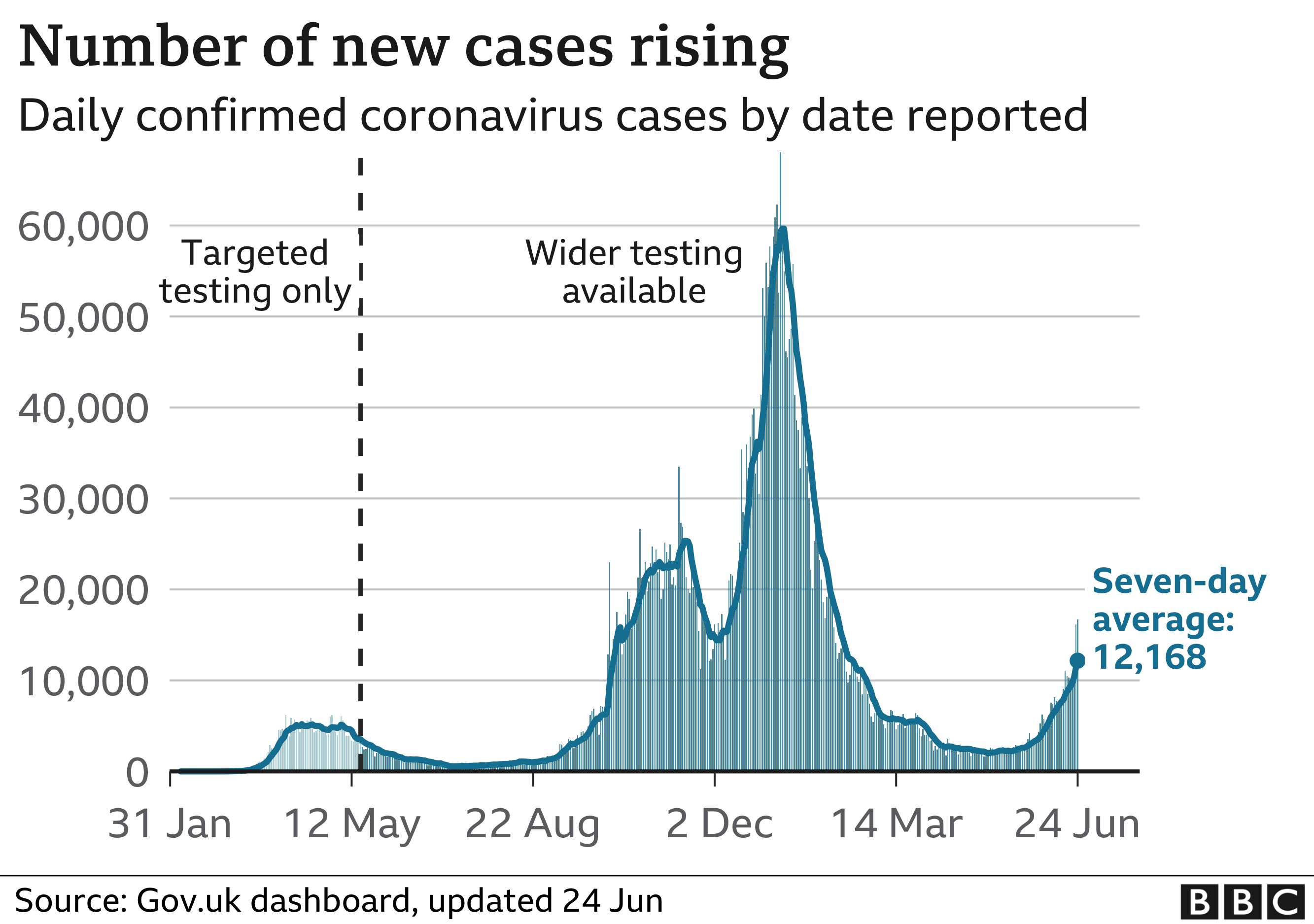

The rise in cases is being driven by the more transmissible Delta variant and has led the national governments to suspend or delay the lifting of coronavirus restrictions.
The original “roadmap” in England had set 21 June as the date by which all legal restrictions on social contact would end.
This has now been delayed to 19 July, with Prime Minister Boris Johnson saying it would be sensible to wait “just a little longer” to give the NHS time to carry out more vaccinations.
In Scotland, First Minister Nicola Sturgeon has confirmed that lockdown easing will be paused for three weeks to allow time for more people to be vaccinated.
It means mainland areas will not move to level zero – the lowest level of restrictions – until 19 July.
It is thought the infection rate in the first peak of the virus last spring was much higher than was evident from the reported number of cases. Testing capacity was then too limited to detect the true number of daily cases.
The orange and red areas on the map below show the places currently seeing the highest number of cases per 100,000 people.
All nations in the UK have been easing restrictions on everyday life in recent months. You can use our postcode look-up to check what the rules are where you live.

The Delta variant, first identified in India, is now the main type of coronavirus in the UK.
Delta spreads faster than the Kent variant (now named Alpha), which had previously been most common.
However, vaccines still appear to be working well, even with Delta in circulation.
A single dose reduces a person’s chance of catching coronavirus and needing hospital treatment by about 75%, according to the latest PHE data, while two doses reduces the risk of hospitalisation by more than 90%.

More than 43 million people – more than 80% of all UK adults – have now received a first dose of a vaccine and almost 32 million people, or about 60% of all adults, have had a second.
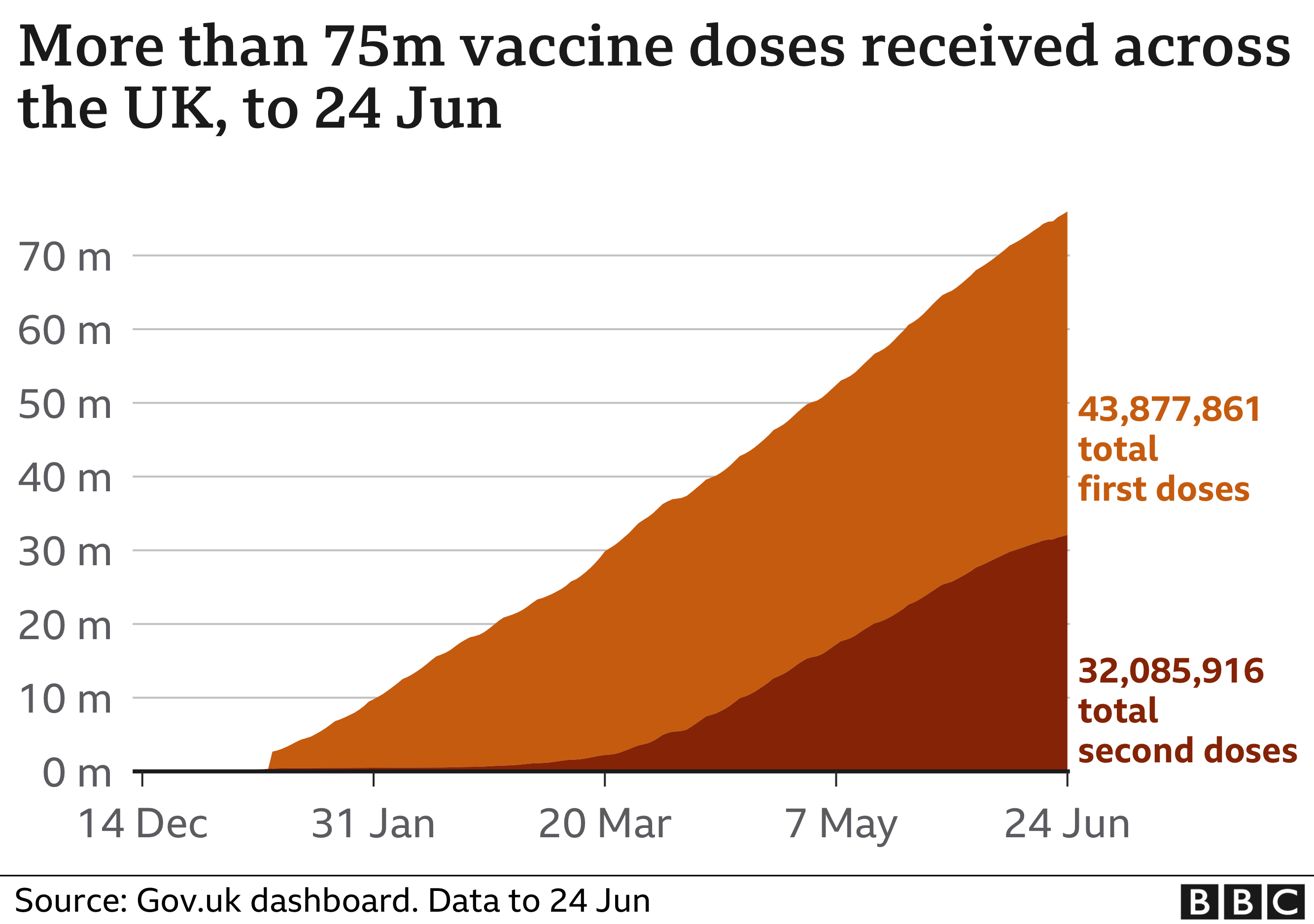

In total, more than 36 million people in England have had one vaccine dose.
In Scotland, 3.7 million people have had their first shot, while the figure is more than 2.2 million in Wales and 1.1 million in Northern Ireland.
While more people received second doses from April to June, the number of first doses has risen again in recent weeks as vaccines are rolled out to younger age groups.
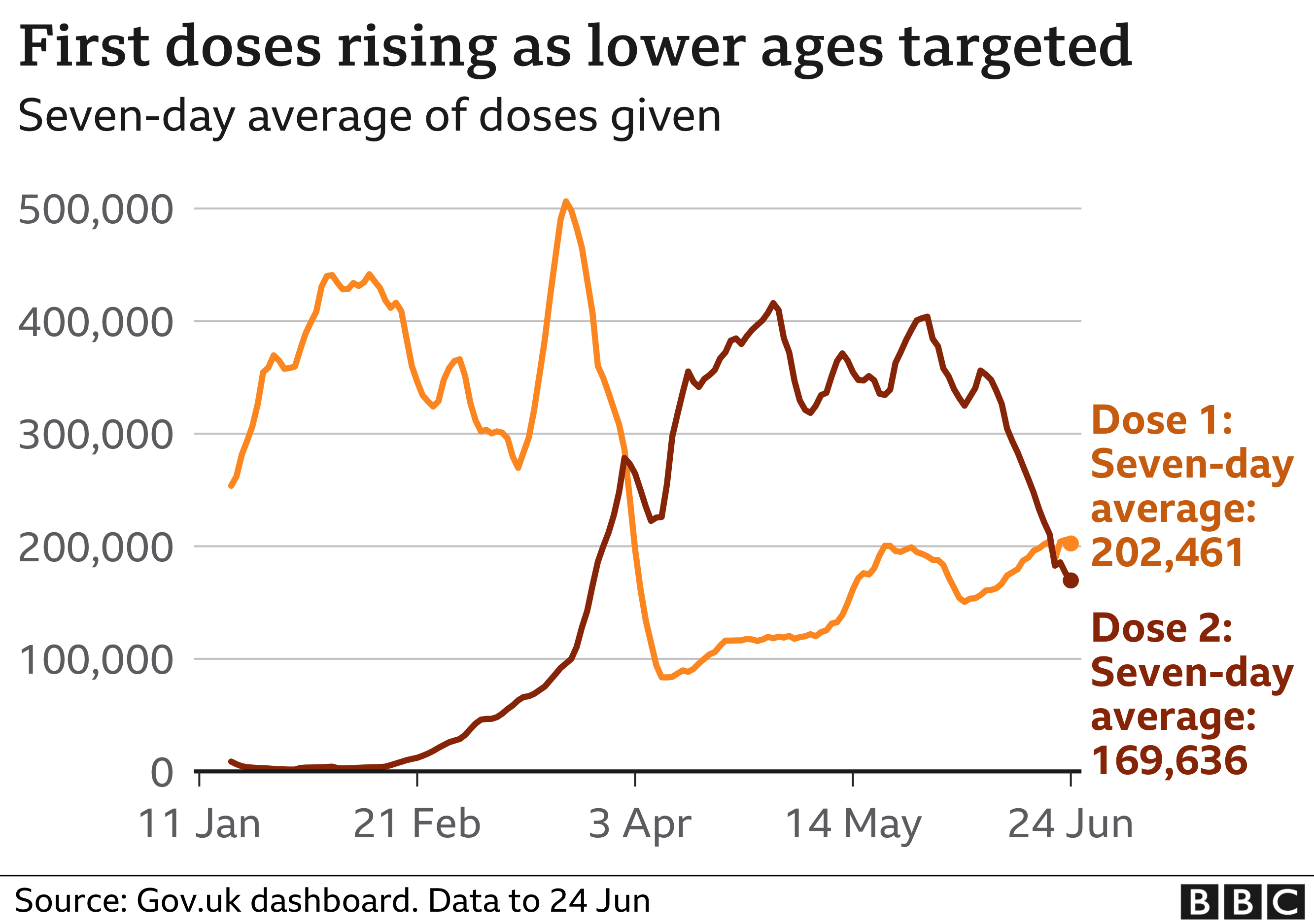

Everyone over the age of 18 in England can now book a vaccination. Over-18s in Northern Ireland and Wales are also eligible, while Scotland is offering first doses to everyone over 30.
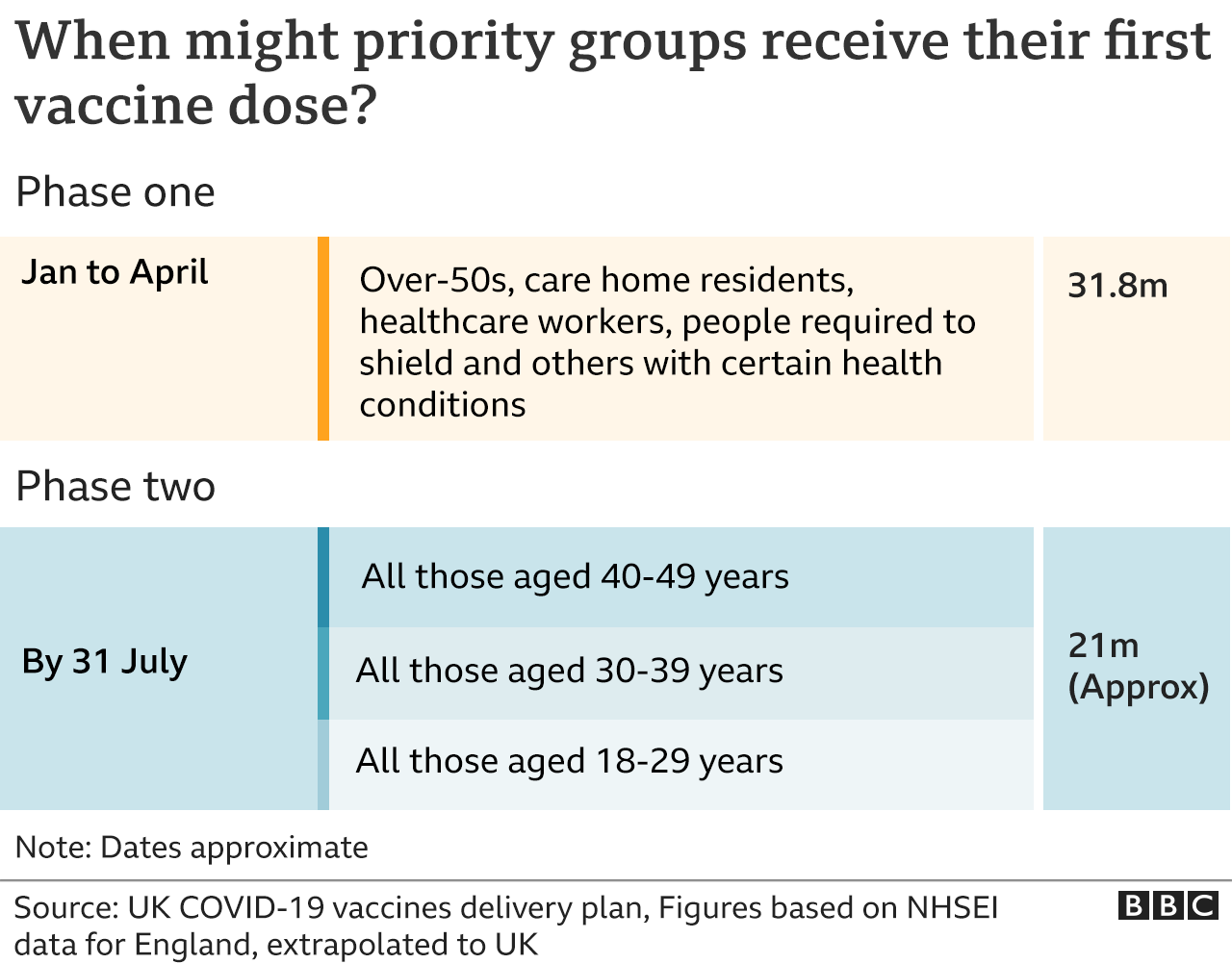


A further 18 deaths within 28 days of a positive test were reported on Friday.
There were 15 deaths reported in England, two in Scotland and one in Wales. No deaths were reported in Northern Ireland.


Rules were amended last summer to include deaths in the coronavirus total only if they occurred within 28 days of a positive test. Previously in England, all deaths after a positive test were included.
England has seen the majority of UK deaths from Covid-19. Using the 28-day cut-off, there have been more than 112,500.

The most recent government figures show 1,485 people with coronavirus in hospital in the UK.
Although numbers are now rising, they are far below the peak of nearly 40,000 people back in January.
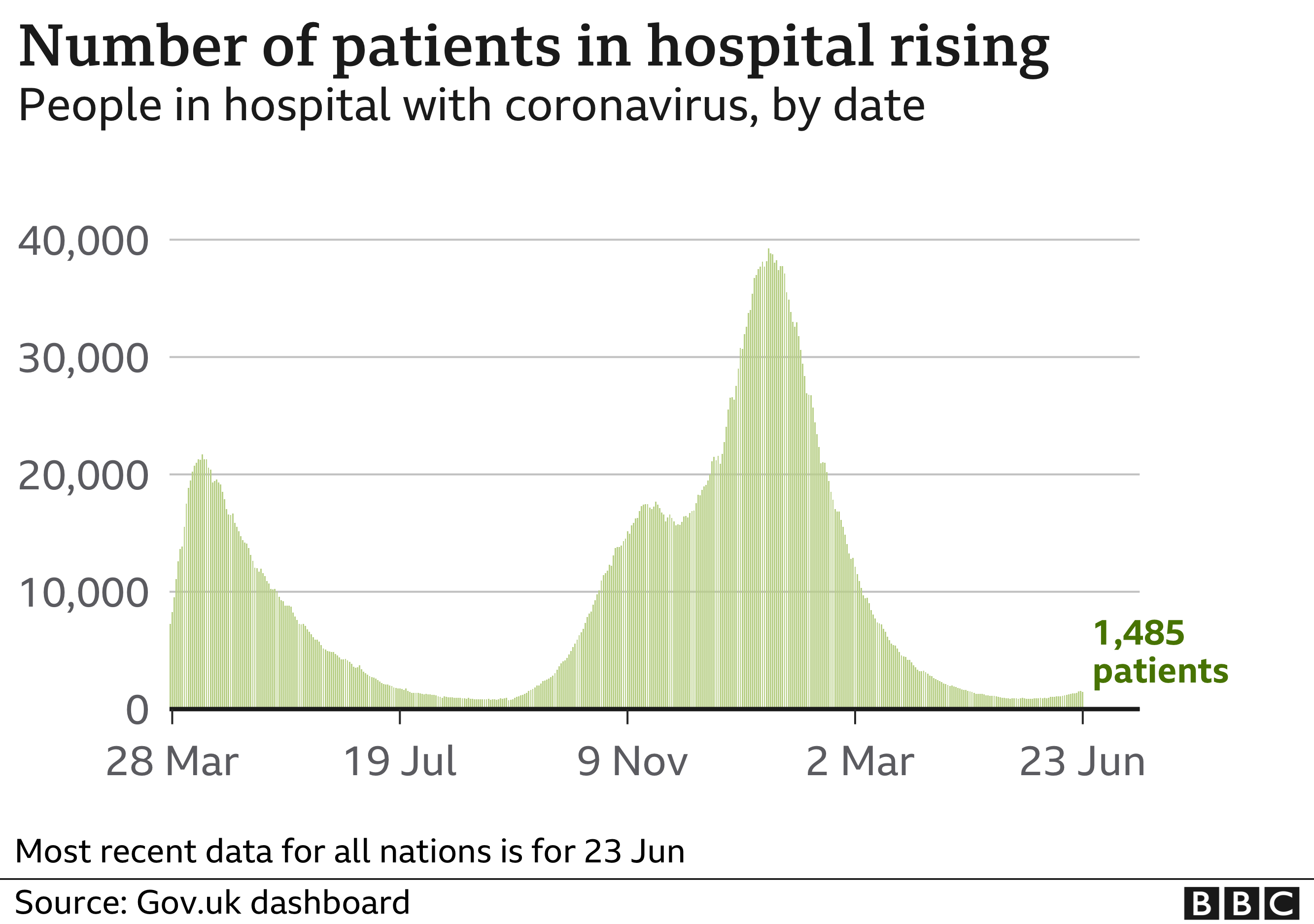

London, the South East and the Midlands saw the highest numbers in the winter peak.
Patient numbers have fallen in all UK nations and regions in recent months, although they are rising again in some areas, as the chart below shows.
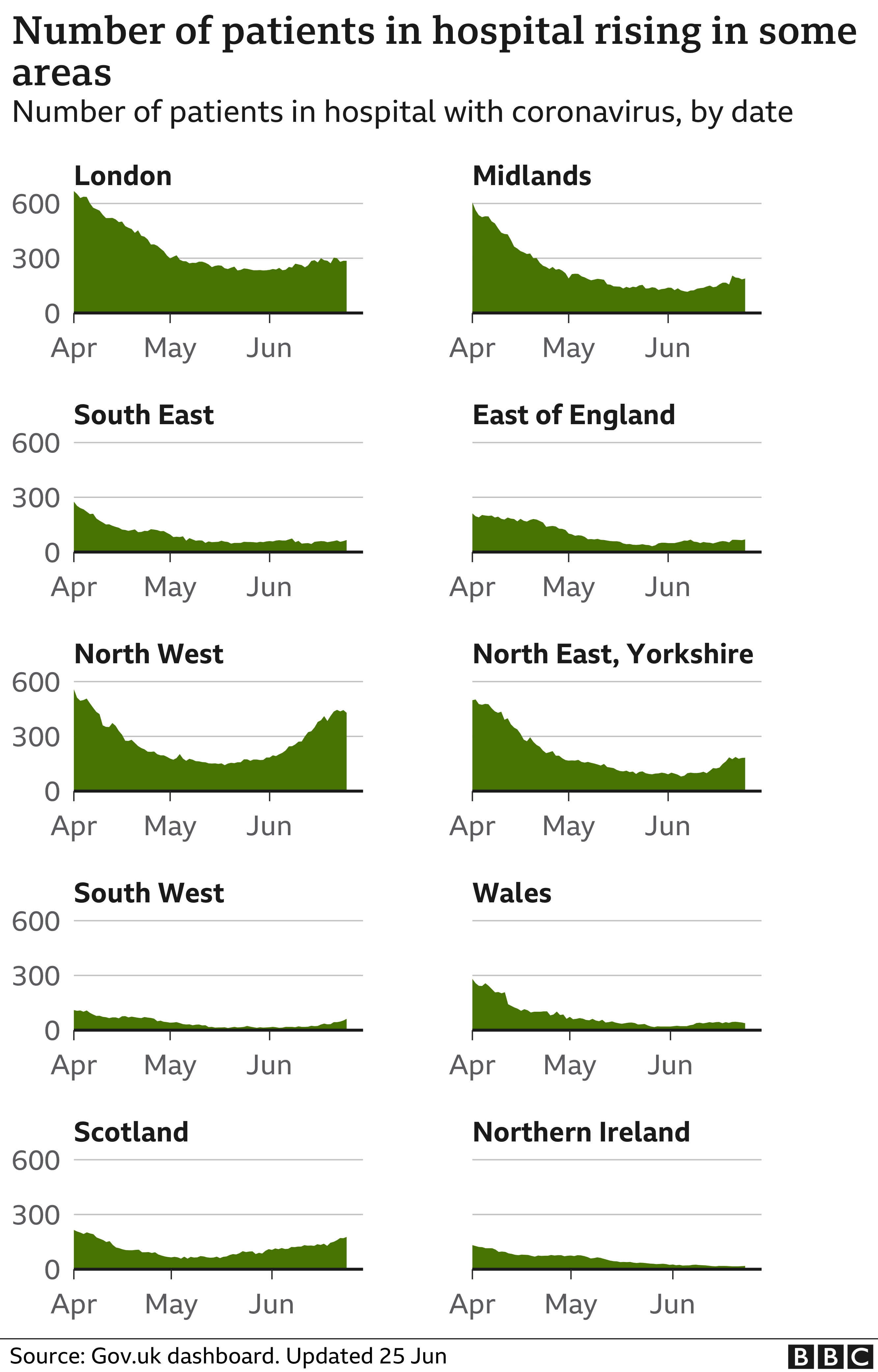

Patient groups and hospital staff have warned that lives are being put at risk by the huge backlog of treatment left by the pandemic.
In-depth analysis by BBC News found nearly a third of hospitals have seen long waits increase, major disruption to cancer services and a fall in GP referrals and screening services.

When looking at the overall death toll from coronavirus, official figures count deaths in three different ways, each giving a slightly different number.
First, government figures count people who died within 28 days of testing positive for coronavirus – and that total is now just above 128,000.
According to the latest ONS figures, the UK has now seen more than 152,000 deaths – that’s all those deaths where coronavirus was mentioned on the death certificate even if the person had not been tested for the virus.
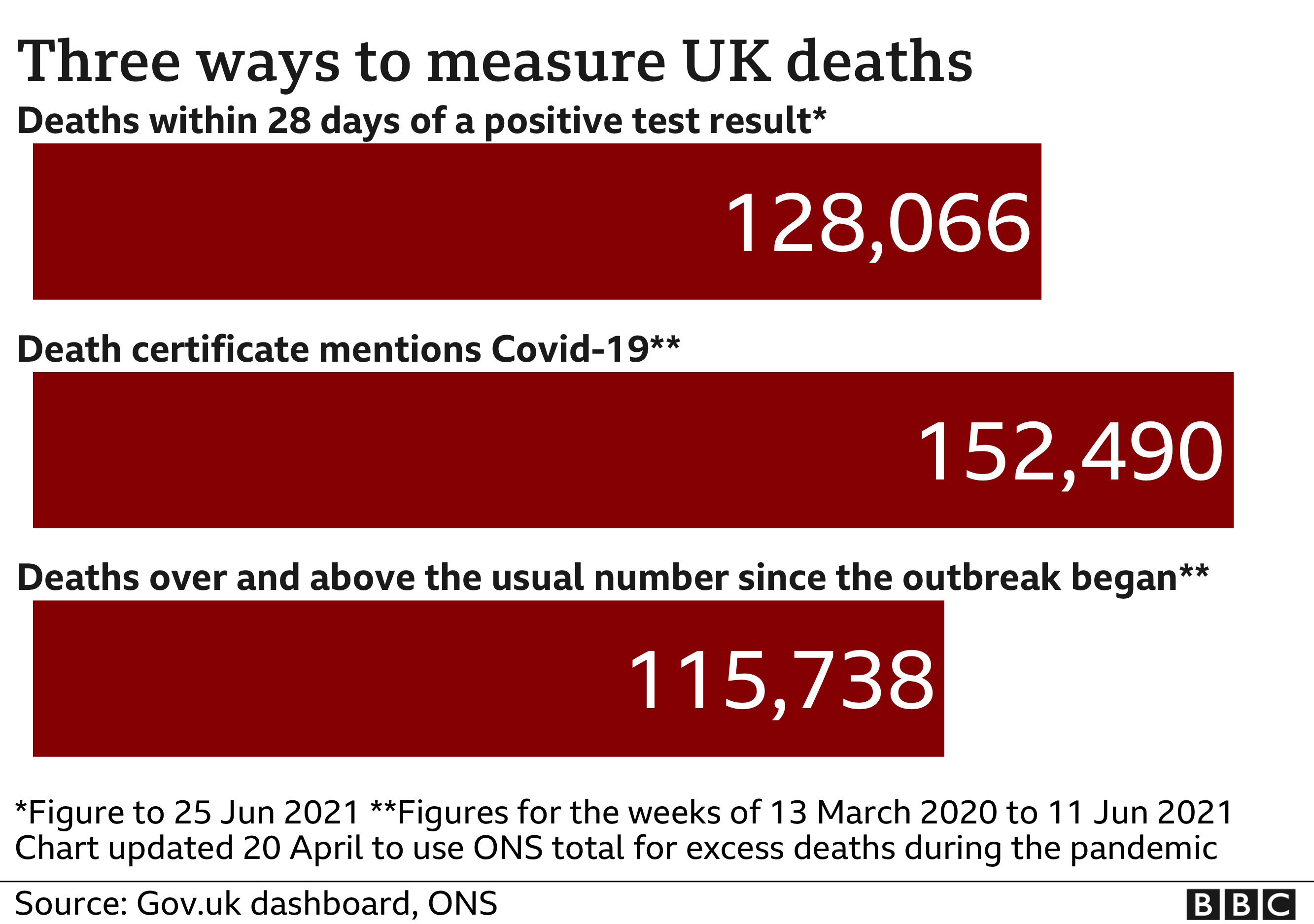

The third measure counts all deaths over and above the usual number at the time of year – that figure was 115,738 by 11 June.
In total, there were 11,611 deaths registered in the week to 11 June, which was 285 deaths more than the five-year average.
Of the total deaths, 93 were related to coronavirus. It’s the lowest total since the week ending 4 September last year.
There have now been more deaths involving Covid than “excess” deaths, which means non-Covid deaths must be below usual levels.
This could be because of a milder flu season – resulting from less travel and more social distancing – and because some people who might have died for other reasons had there been no pandemic, died of Covid.
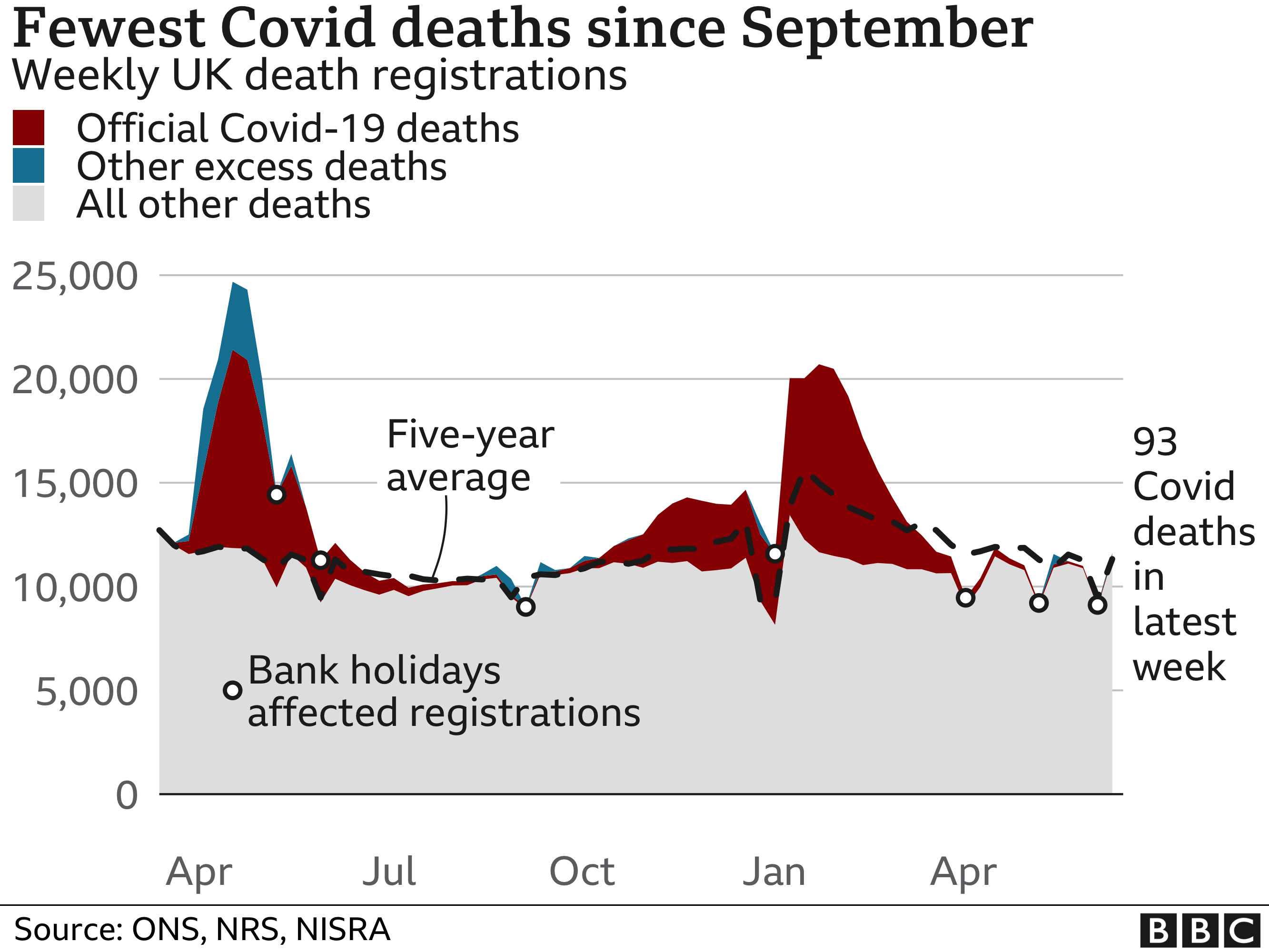



The “R number” is the average number of people an infected person will pass the disease on to.
If R is below one, then the number of people contracting the disease will fall; if it is above one, the number will grow.
The government has said in the past that the R number is one of the most important factors in making policy decisions.
However, it is harder to estimate the R number when cases are at a low level and therefore the government is not currently producing a figure for the UK as a whole.
The latest estimate for England is 1.2 to 1.4, while for Northern Ireland it is 1.2 to 1.5, for Scotland it is 1.2 to 1.4 and for Wales it is 1.1 to 1.4.


